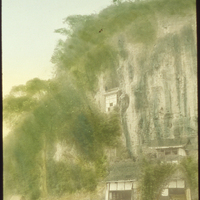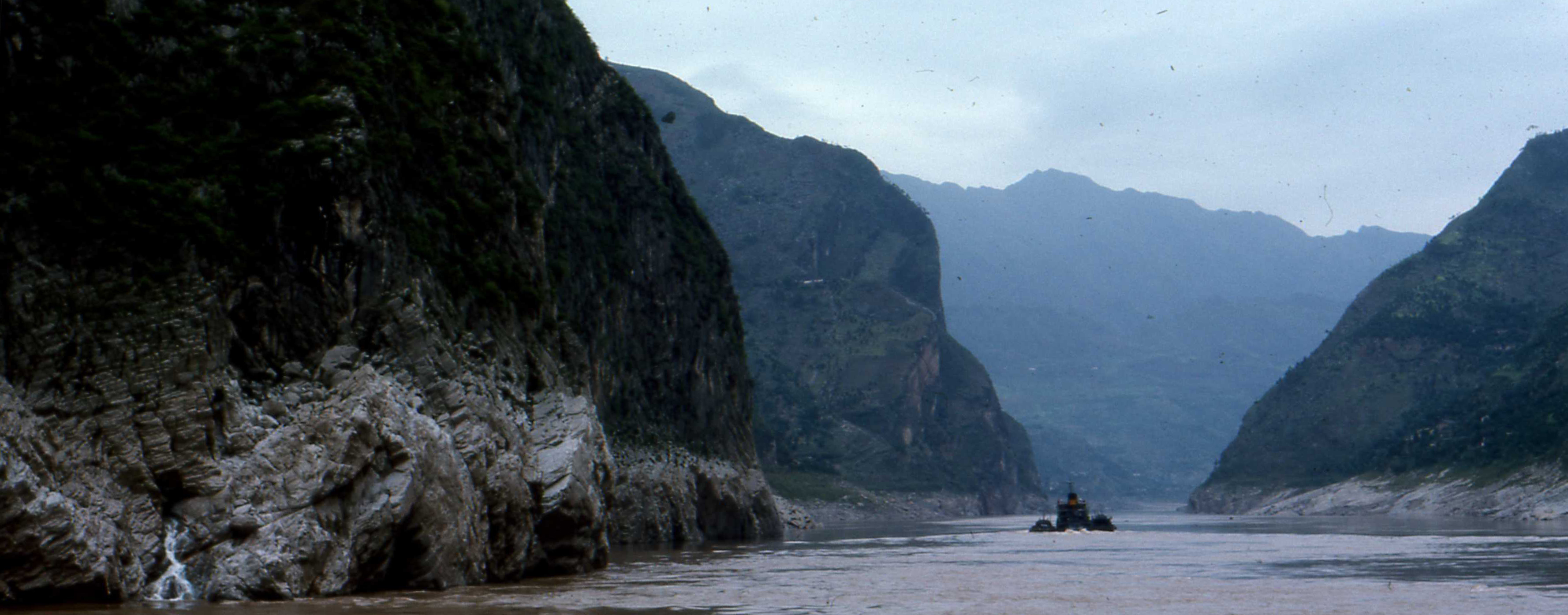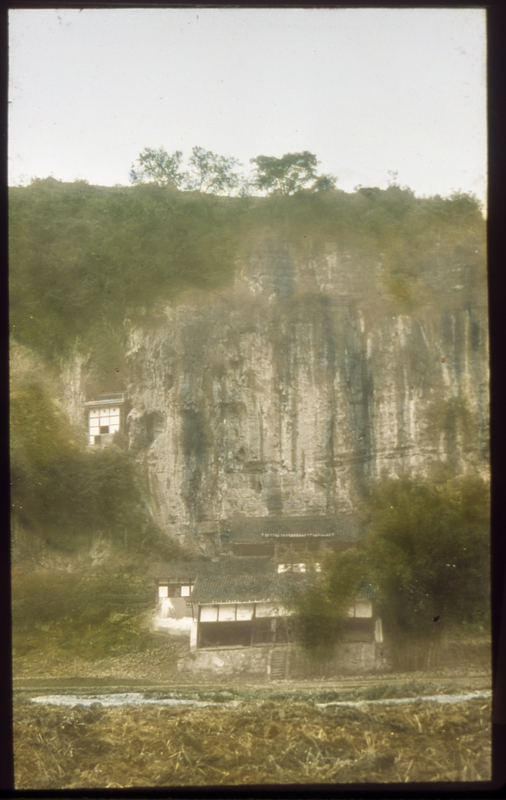Golden Sand Temple and Cave
Item
-
Title
-
Golden Sand Temple and Cave
-
Caption
-
Cave and temple called Golden Sands cave south of Suifu at Shuin-chien-ssu. [Color]
-
Identifier
-
DCG_042
-
Alternative Identifier
-
139, 51
-
Description
-
Because Graham describes this location as "south of Suifu," it is most likely that he took this photo while he was stationed at Yibin (Suifu). This portion of the river is now called Jinsha River, but was then considered the Upper Yangtze. This image shows the two buildings of the temple from a direct front view. The upper temple is accessed by an almost perpendicular staircase carved out of the rock between the two temples. Trees grow on the top of the rock face. In the foreground, straw or grass can be seen on the shoreline opposite the temples.
-
Creator
-
Graham, David Crockett
-
Date Created
-
1913-1931
-
Location
-
Yibin, Sichuan
-
Original Format
-
Glass plate
-
Source
-
Whitman College and Northwest Archives
-
Provenance
-
Jean Graham Brown and Dorothy Graham Edson, daughers of DCG, and Chris Hoogendyk, grandson of DCG.
-
Record Date
-
2024-09-24
-
Contributor
-
Nicholas Fowler; Cory Willmott
-
Type
-
Still Image
-
References
-
Graham, David Crockett. 1928. Religion in Szechuan Province, China. Smithsonian Miscellaneous Collections 80(4): 1-83.
-
Subject
-
Cliff Caves
-
abstract
-
“At Shuin Gien Si or Shiong Gien Si there is a Buddhist temple in a cave half-way up a perpendicular cliff. The rock is limestone, and the cave is a natural one inside which there is dripping water which is believed to have power to heal diseases. This cave can be reached only by means of steps hewn out of the solid rock. A tree which stands very near the steps is a fengshui tree. The temple has several stories, the first story being on a level with the flat ground under the cliff, and the last story being in the cave itself. The stone of the cliff is slightly yellow, so that it is thought to resemble gold dust. The temple is therefore named Gin Sha Dong, or the cave of golden sands. On the top of the cliff trees of a forest can be seen, but the sides are so steep that they are bare of vegetation. Here again a place of marvelous beauty that naturally arouses feelings of wonder and awe has been chosen as the location for a temple, a holy place set aside for the worship of the gods.”
Graham, David Crockett. 1928. Religion in Szechuan Province, China. Smithsonian Miscellaneous Collections 80(4): 1-83. Pp.56-58.
 Golden Sand Temple with Tent
Golden Sand Temple with Tent
 Golden Sand Temple with Tent
Golden Sand Temple with Tent

